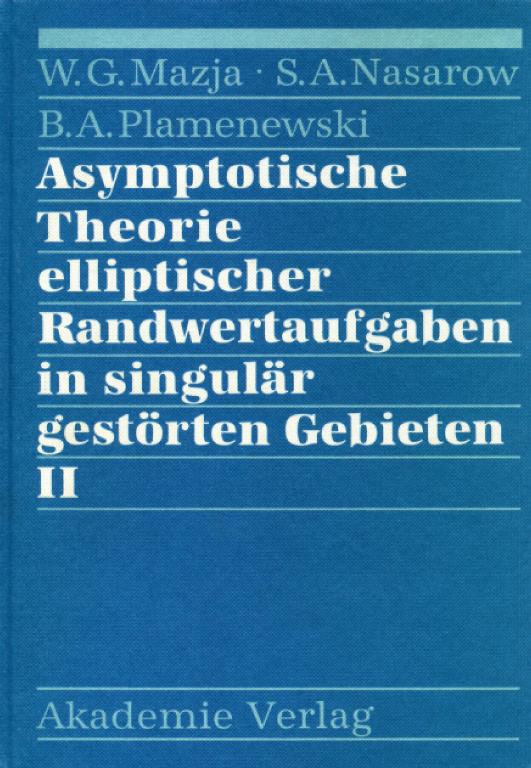Mazja, W. G.; Nasarow, S. A.; Plamenewski, B. A.,
Berlin, Akademie Verlag, 1992.
The authors continue their investigations from Volume I [MR 92g:35059],
employing the same general principles. Further, they consider elliptic
boundary value problems the solutions of which are singularly perturbed
caused by several degenerations of the domain. This concerns, especially,
the following ones: (1) domains with narrow cavities, e.g., with tubes,
notches, or cracks removed; (2) domains consisting of some parts which are
connected merely by narrow passages; (3) narrow domains, i.e., the
expansions in some directions are very small compared with the other ones
(including, e.g., domains with closely neighbouring parallel cracks). Here
"small" or "narrow" is measured by a positive parameter ![]() on which
the domain
on which
the domain ![]() in question depends; for
in question depends; for ![]() ,
, ![]() will degenerate: e.g.,
will degenerate: e.g., ![]() with a
"normal" domain G in
with a
"normal" domain G in ![]() , and
, and ![]() a torus of
thickness
a torus of
thickness ![]() , will tend to
, will tend to ![]() where M is a closed
curve in G.
where M is a closed
curve in G.
The main subject is the construction of asymptotic expansions, for
![]() , of the solutions of the problems posed in
, of the solutions of the problems posed in ![]() .
This is done, as in Volume I, by iteration processes which consist of
solving, in alternating fashion, certain limit problems (two, in general)
where at least one of them depends on parameters: one problem in
.
This is done, as in Volume I, by iteration processes which consist of
solving, in alternating fashion, certain limit problems (two, in general)
where at least one of them depends on parameters: one problem in ![]() ,
and another one, e.g., in the complement of the model of the cavity (hole)
removed from G. As usual in singular perturbation problems, boundary
layers may arise.
,
and another one, e.g., in the complement of the model of the cavity (hole)
removed from G. As usual in singular perturbation problems, boundary
layers may arise.
The proofs of solvability of the limit problems, and of the asymptotic
expansions of the solutions, rely essentially on results of the modern
theory of elliptic boundary value problems in piecewise smoothly bounded
domains. The constructions of the expansions here are mostly far more
complicated then in the cases of singular perturbations of local type
considered in Volume I. Fortunately, most problems are first presented in a
simpler model setting (e.g., Poisson's equation in ![]() ).
).
In the last part (Chapter VII) of the book, asymptotic expansions of
solutions are, by similiar methods, constructed for elliptic boundary value
problems with rapidly periodically oscillating coefficients, but also for
differential or difference equations on ![]() -periodic curvilinear nets
in
-periodic curvilinear nets
in ![]() ; especially, the corresponding homogenized differential
operators are derived.
; especially, the corresponding homogenized differential
operators are derived.
Moreover, an interesting analysis of the paradoxa is given that may occur with the solution of plane boundary value problems if a smooth boundary is approximated by polygons.
Reviewed by Dietrich Gohde
